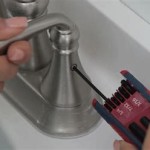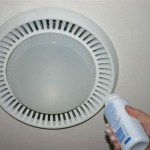How To Tile Around a Bathroom Vanity
Tiling around a bathroom vanity is a common home improvement project that can significantly enhance the aesthetic appeal and functionality of the space. A well-tiled area protects the wall and floor from water damage, simplifies cleaning, and provides a cohesive and visually appealing look. This article provides a comprehensive guide on how to tile around a bathroom vanity, covering preparation, tiling, and finishing touches to achieve professional-looking results.
Key Point 1: Planning and Preparation
Proper planning and preparation are crucial for a successful tiling project. This phase involves accurate measurements, selection of appropriate materials, and thorough surface preparation to ensure the tiles adhere correctly and maintain their integrity over time.
Measuring the Area: The first step is to accurately measure the area around the vanity that requires tiling. This includes the height of the backsplash, the width, and any areas on the floor adjacent to the vanity. These measurements will determine the quantity of tiles required. It’s advisable to purchase at least 10% extra tiles to account for cuts, breakage, and potential future repairs.
Choosing the Right Tiles: The selection of tiles is a matter of personal preference, but it's important to consider factors such as material, size, and finish. Common materials include ceramic, porcelain, glass, and natural stone. Ceramic and porcelain tiles are popular choices due to their durability, water resistance, and ease of maintenance. Glass tiles offer a sleek and modern look but may require specialized cutting tools. Natural stone tiles, such as marble or granite, provide a luxurious aesthetic but may require more frequent sealing. Tile size should be chosen based on the area being tiled and the overall design aesthetic. Smaller tiles can create intricate patterns, while larger tiles offer a more streamlined look. The finish of the tile, whether glossy, matte, or textured, should also be considered in terms of both aesthetics and safety, especially for floor tiles, where slip resistance is important.
Gathering Necessary Tools and Materials: Before beginning the tiling process, it is essential to gather all the necessary tools and materials. This includes:
- Tiles
- Tile adhesive (thin-set mortar)
- Grout
- Tile spacers
- Tile cutter (manual or wet saw)
- Notched trowel
- Grout float
- Grout sponge
- Measuring tape
- Level
- Pencil
- Safety glasses
- Gloves
- Clean cloths
- Caulk
Preparing the Surface: A clean, level, and stable surface is essential for successful tile installation. Begin by cleaning the wall or floor to remove any dirt, dust, grease, or loose debris. For walls, use a mild detergent and water to clean the surface, then rinse and allow it to dry completely. For floors, sweep or vacuum the area thoroughly. Inspect the surface for any imperfections, such as cracks or unevenness. Repair any cracks with patching compound and allow it to dry according to the manufacturer's instructions. For uneven surfaces, use a self-leveling compound to create a smooth and even base for the tiles. Priming the surface with a tile primer can also improve adhesion, especially on porous surfaces. Allow the primer to dry completely before proceeding.
Planning the Layout: Before applying any adhesive, it is important to plan the tile layout. This involves determining the starting point, aligning the tiles, and ensuring that any cuts are made in inconspicuous areas. Start by finding the center of the area being tiled and drawing a vertical and horizontal line. Dry-fit the tiles along these lines to visualize the layout and identify any areas where cuts will be necessary. Adjust the layout as needed to minimize small or awkward cuts, particularly in visible areas. Consider the placement of the vanity and its relationship to the tile pattern. If possible, try to position full tiles around the vanity and make cuts in less noticeable areas. Mark the tile layout with a pencil to serve as a guide during the installation process.
Key Point 2: Tiling Process
The tiling process involves applying adhesive, setting the tiles, and ensuring that they are level and properly spaced. Attention to detail during this phase is crucial for achieving a professional and long-lasting result.
Applying the Adhesive: Prepare the tile adhesive (thin-set mortar) according to the manufacturer's instructions. Use a clean bucket and mixing paddle to ensure that the adhesive is thoroughly mixed and free of lumps. The consistency should be similar to that of peanut butter. Apply the adhesive to the surface using a notched trowel. Hold the trowel at a 45-degree angle and spread the adhesive in a uniform layer, creating ridges that will help the tiles adhere properly. Work in small sections, applying only enough adhesive for a few tiles at a time to prevent it from drying out. The size of the notch on the trowel will depend on the size and type of tile being used. Consult the tile adhesive manufacturer's recommendations for the appropriate trowel size.
Setting the Tiles: Carefully place the tiles onto the adhesive, aligning them with the layout lines. Press each tile firmly into the adhesive, using a slight twisting motion to ensure good contact. Use tile spacers to maintain consistent spacing between the tiles. The size of the spacers will depend on the desired grout joint width. Check the level of each tile with a level and make any necessary adjustments by gently tapping the tile with a rubber mallet. Remove any excess adhesive from the tile surfaces with a damp sponge. Continue setting the tiles, working in small sections and checking the level and spacing frequently. For areas around the vanity, carefully measure and cut the tiles to fit using a tile cutter or wet saw. Wear safety glasses when cutting tiles to protect the eyes from debris. Apply adhesive to the back of the cut tiles and set them in place, ensuring that they align properly with the surrounding tiles.
Cutting Tiles: Cutting tiles is often necessary to fit them around fixtures, corners, and edges. There are two main types of tile cutters: manual tile cutters and wet saws. A manual tile cutter is suitable for straight cuts on ceramic and porcelain tiles. It works by scoring the surface of the tile and then snapping it along the scored line. A wet saw is used for more complex cuts, such as curves and angles, and is also suitable for cutting harder materials such as glass and natural stone. When using a wet saw, always wear safety glasses and follow the manufacturer's instructions. Mark the cut line on the tile with a pencil and carefully guide the tile through the saw blade, using a slow and steady motion. After cutting the tiles, smooth the edges with a tile file or sanding block to remove any sharp edges or burrs.
Allowing the Adhesive to Cure: After all the tiles have been set, allow the adhesive to cure according to the manufacturer's instructions. This typically takes 24 to 48 hours. Avoid walking on or disturbing the tiles during the curing process. Protect the tiled area from moisture and extreme temperatures. Once the adhesive has fully cured, proceed to the grouting phase.
Key Point 3: Grouting and Finishing
Grouting fills the spaces between the tiles, providing a waterproof seal and enhancing the overall appearance of the tiled surface. Proper grouting and finishing are essential for achieving a durable and aesthetically pleasing result.
Applying the Grout: Remove the tile spacers before applying the grout. Prepare the grout according to the manufacturer's instructions. Use a clean bucket and mixing paddle to ensure that the grout is thoroughly mixed and free of lumps. The consistency should be similar to that of cake frosting. Apply the grout to the tile surface using a grout float. Hold the float at a 45-degree angle and spread the grout diagonally across the tiles, forcing it into the grout joints. Work in small sections and ensure that all the joints are completely filled with grout. Remove any excess grout from the tile surfaces with the edge of the grout float.
Cleaning the Grout: After applying the grout, allow it to set for approximately 15 to 30 minutes, or according to the manufacturer's instructions. Use a damp grout sponge to clean the excess grout from the tile surfaces. Rinse the sponge frequently in clean water. Work in small sections and use a circular motion to remove the grout residue. Be careful not to remove too much grout from the joints. After cleaning the grout with a sponge, use a clean, dry cloth to buff the tile surfaces and remove any remaining grout haze. Allow the grout to cure completely according to the manufacturer's instructions. This typically takes 24 to 72 hours.
Sealing the Grout (Optional): Sealing the grout can help protect it from stains and moisture damage. Apply a grout sealer according to the manufacturer's instructions. Use a small brush or applicator to apply the sealer to the grout joints, being careful not to get it on the tile surfaces. Wipe away any excess sealer with a clean cloth. Allow the sealer to dry completely before exposing the tiled area to moisture. Grout sealing is particularly recommended in high-moisture areas such as bathrooms and kitchens.
Caulking: Apply caulk to the joints where the tiled surface meets the vanity, walls, or floor. Caulk provides a flexible, waterproof seal that prevents water from seeping behind the tiles. Choose a caulk that matches the color of the grout or tiles. Apply the caulk using a caulking gun, creating a smooth, consistent bead. Smooth the caulk with a wet finger or a caulking tool to create a clean and professional finish. Remove any excess caulk with a damp cloth. Allow the caulk to dry completely before exposing the tiled area to moisture.
Final Touches: Inspect the tiled area for any imperfections or areas that require touch-ups. Clean the tile surfaces and grout with a mild detergent and water. Replace any trim pieces or accessories that were removed during the tiling process. Allow the tiled area to dry completely before using the vanity. Regular cleaning and maintenance will help keep the tiled surface looking its best for years to come.

Bathroom Design Getting Tile Around The Vanity Right

Bathroom Design Getting Tile Around The Vanity Right

Bathroom Design Getting Tile Around The Vanity Right

Tiled Bathroom Vanity Remodel Decor Countertops

Tutorial How To Install A Bathroom Vanity The Diy Playbook
Backsplash Advice For Your Bathroom Would You Tile The Side Walls Too Designed

62 Bathroom Backsplash Ideas For A Stylish Makeover Remodel Tile Vanity

Updating A Vanity With Custom Tile Backsplash The Kim Six Fix

Bathroom Design Getting Tile Around The Vanity Right

How To Install A Glass Tile Vanity Top Diy
Related Posts







